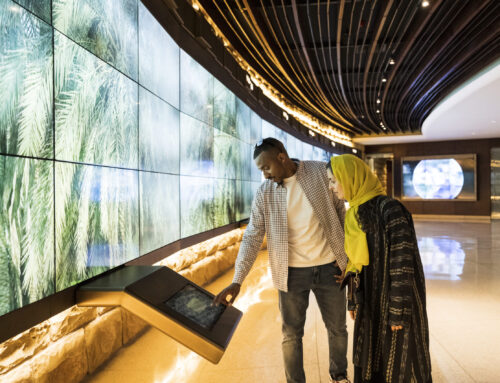In recent years, virtual reality (VR) technology has revolutionized how museums engage with their visitors.
By transporting users to immersive and interactive virtual environments, VR opens up a world of possibilities for museums to enhance education, accessibility, and visitor experiences. Let’s explore the numerous benefits of museums embracing VR technology.
Enhanced Accessibility
One of the most significant advantages of VR in museums is its ability to provide accessibility to individuals who may face physical or geographical limitations. VR allows visitors to explore artifacts, exhibitions, and even entire museums from the comfort of their homes. This inclusivity ensures that individuals with disabilities, those residing in remote areas, or those unable to visit can still access and engage with cultural heritage.
Engaging and Immersive Experiences
VR technology offers museums a powerful tool to create captivating and immersive experiences for visitors. By simulating realistic environments and historical scenarios, museums can transport users back in time. This allows them to witness important historical events or explore ancient civilizations. This level of immersion significantly enhances engagement and emotional connection, making the museum experience more memorable and impactful.
Preservation of Fragile Artifacts and Exhibitions
VR plays a crucial role in preserving and showcasing fragile or inaccessible artifacts. Museums can create digital replicas of delicate artworks or artifacts that are too sensitive for physical display. By leveraging VR, museums can provide detailed, high-resolution 3D models that offer a closer examination of these valuable pieces while ensuring their long-term preservation.
Interactive Learning and Education
VR technology has the potential to revolutionize the way education is delivered within museum settings. Through VR experiences, museums can create interactive learning environments that cater to diverse learning styles. Visitors can engage in hands-on activities, explore historical narratives, and gain a deeper understanding of complex concepts. This interactive approach fosters curiosity, critical thinking, and a deeper appreciation for art, history, and science.
Experimental and Temporary Exhibitions
Museums can create experimental and temporary exhibitions without the constraints of physical space or logistical challenges. This flexibility allows curators and artists to push boundaries, showcase avant-garde installations, and experiment with innovative approaches. VR also enables collaborations between museums across the globe, facilitating the sharing of knowledge, artifacts, and experiences.
As technology continues to advance, museums actively embracing virtual reality are reshaping the way we actively experience and appreciate cultural heritage. VR offers numerous benefits, from enhancing accessibility to providing immersive experiences and fostering interactive learning, that actively extend the reach and impact of museums beyond traditional boundaries.





